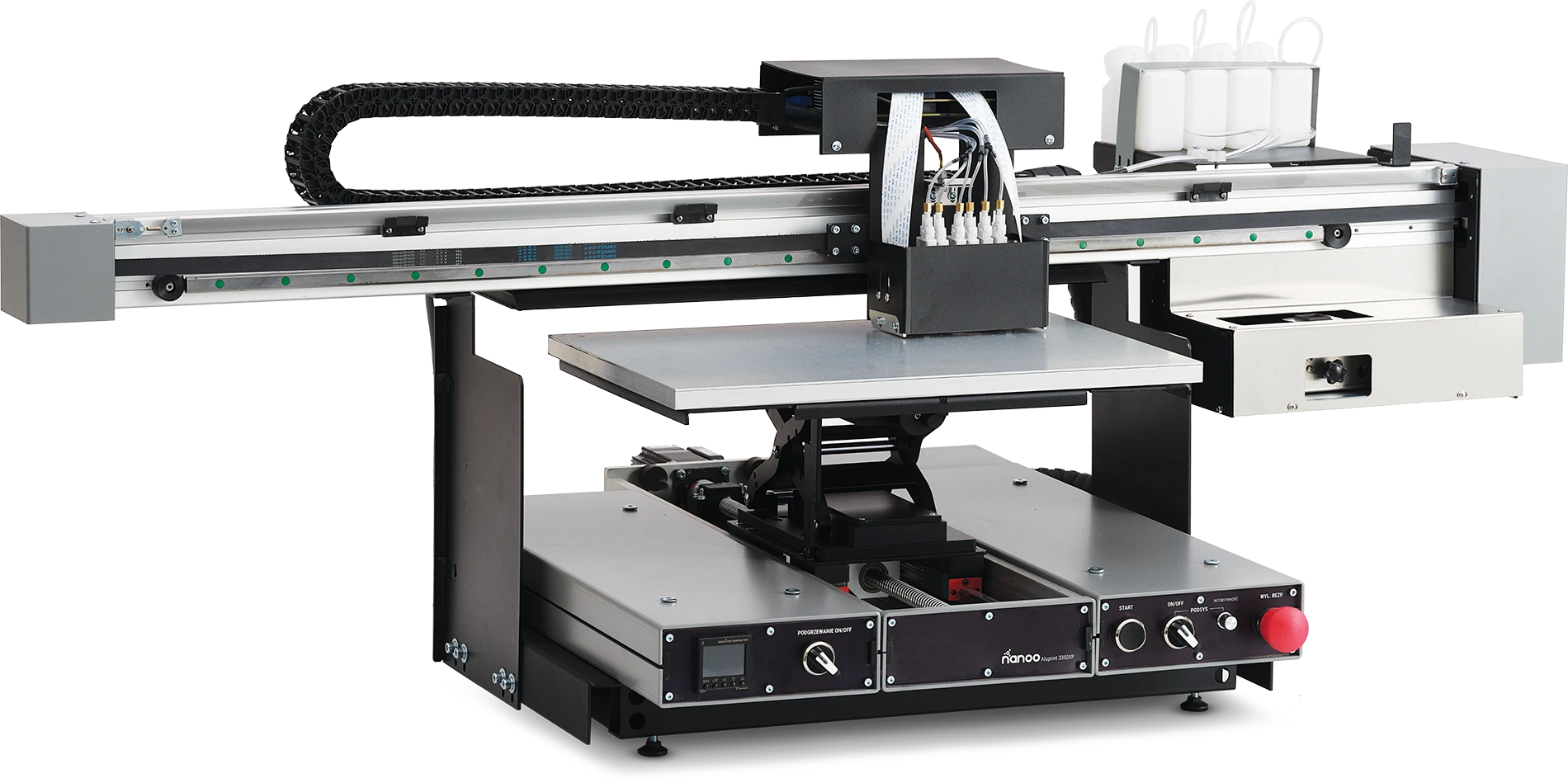Printer for anodized aluminium Nanoo XP6090 ALU
. . .
INDUSTRIAL, FLATBED NANO-INKJET PRINTER
-> Technology: drop on demand inkjet – XP600 printhead
-> Inks: NANOthINK ECODYE – Cyan, Magenta, Yellow, Black
-> Max. format: 330x500mm (borderless printing)
-> Max. media thickness: up to 90mm
-> Print resolutions: from 720x720dpi up to 720x2160dpi
-> Multiple board printing
-> Media weight up to 10kg/m²
-> Printing resolution: 360×1080, 360×1440, 720×720, 720x1440dpi
SYSTEM INTEGRATION RIP
ONYX software (NANOO Edition)
-> available platform: WIndows 7/8/10/11
-> input formats: JPEG, PDF, PDF w/Spots, EPS, PNG, TIFF
ANODIZING
One of the methods for improving the surface properties of metals (e.g., resistance to corrosion or wear, hardness) is the creation of so-called conversion coatings. These are oxide, chromate, or phosphate layers. Oxide coatings are usually created through an electrolytic process called anodizing (also known as eloxation, oxidizing). Anodizing is most commonly applied to pure aluminum and its alloys, magnesium alloys, titanium alloys, and certain steels.
ANODIZED ALUMINUM
For aluminum, the anodizing process is particularly important, as it is a metal with a relatively sensitive surface, which over time can become dull and gray. Through anodizing, a surface layer is formed, which improves resistance to scratches, wear, and various external factors, even relatively aggressive ones such as acid rain, seawater, or UV radiation.
Anodizing is an effective way to slow down the aging processes of aluminum.
Anodizing also enhances the aesthetic qualities of aluminum. The surface has a subtle shine, a lasting color, feels pleasant to the touch, and at the same time, does not retain dirt.
The anodized surface is non-toxic and exhibits chemical stability.
DYEING AND PRINTING ANODIZED ALUMINUM
During the anodizing process, a strongly adhered oxide layer is formed on the material’s surface. This highly porous layer has good absorptive properties. This is utilized in dyeing and decorative finishing processes for aluminum details.
The ALUPRINT technology offered by NANOO involves filling the pores formed during anodizing with dye/ink.
After dyeing/printing the surface, the pores of the oxide layer along with the printed image can be “sealed” through a sealing process, resulting in a smooth, glossy, scratch-resistant, and weather-resistant surface.
ALUPRINT technology is ideal for producing nameplates, control panels for machines and devices, as well as decorative elements for small architecture and interior furnishings.

